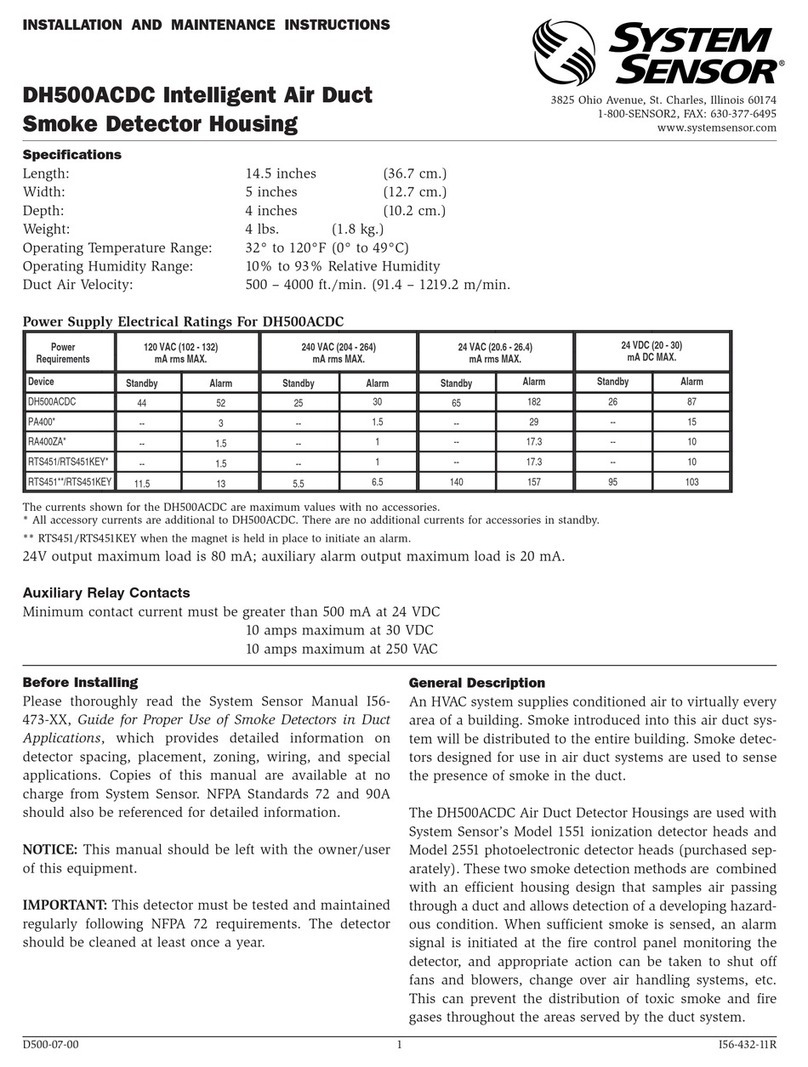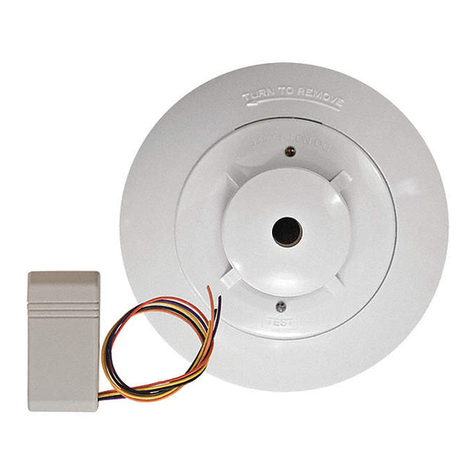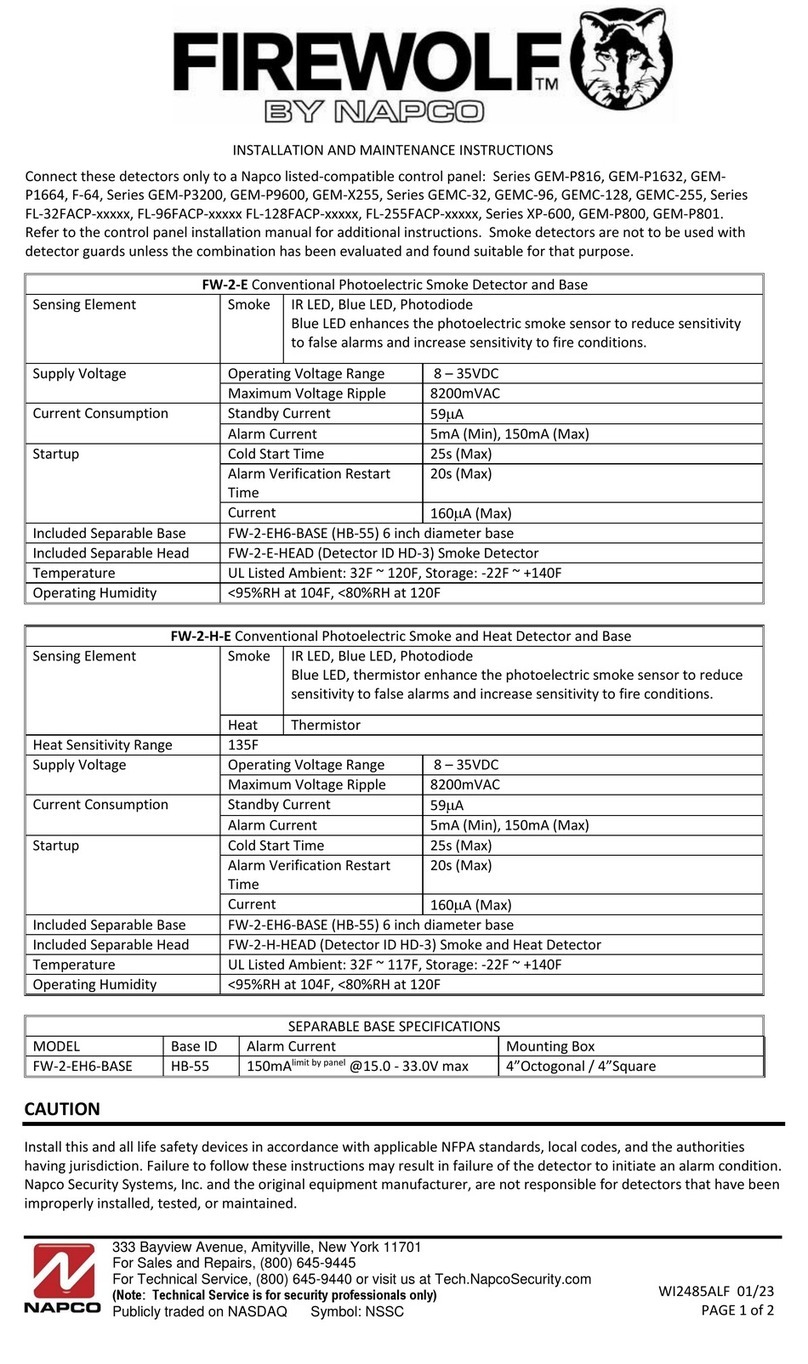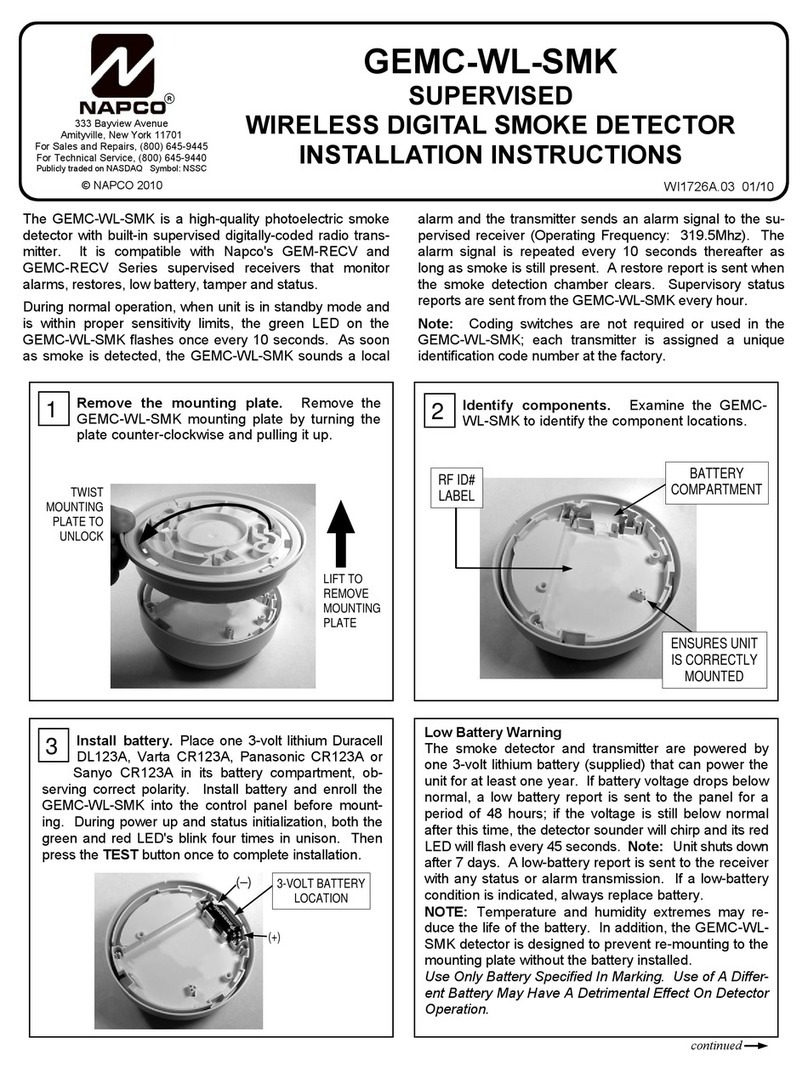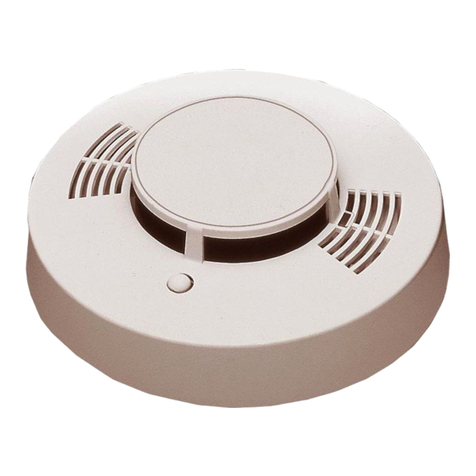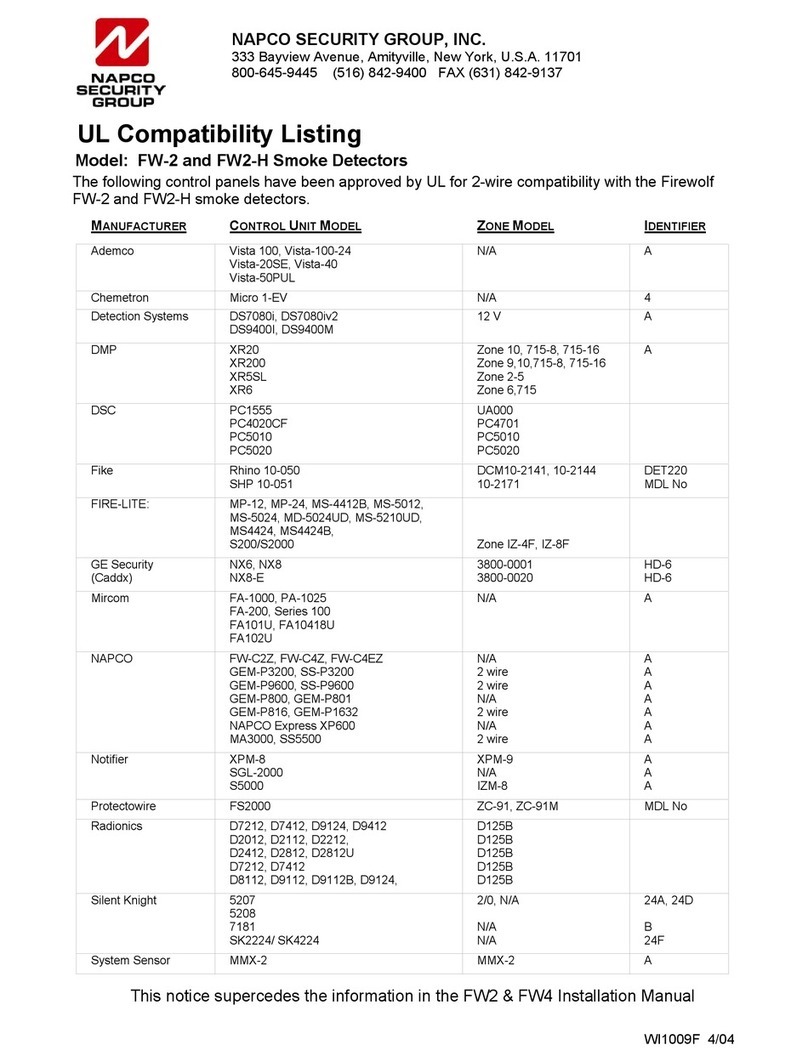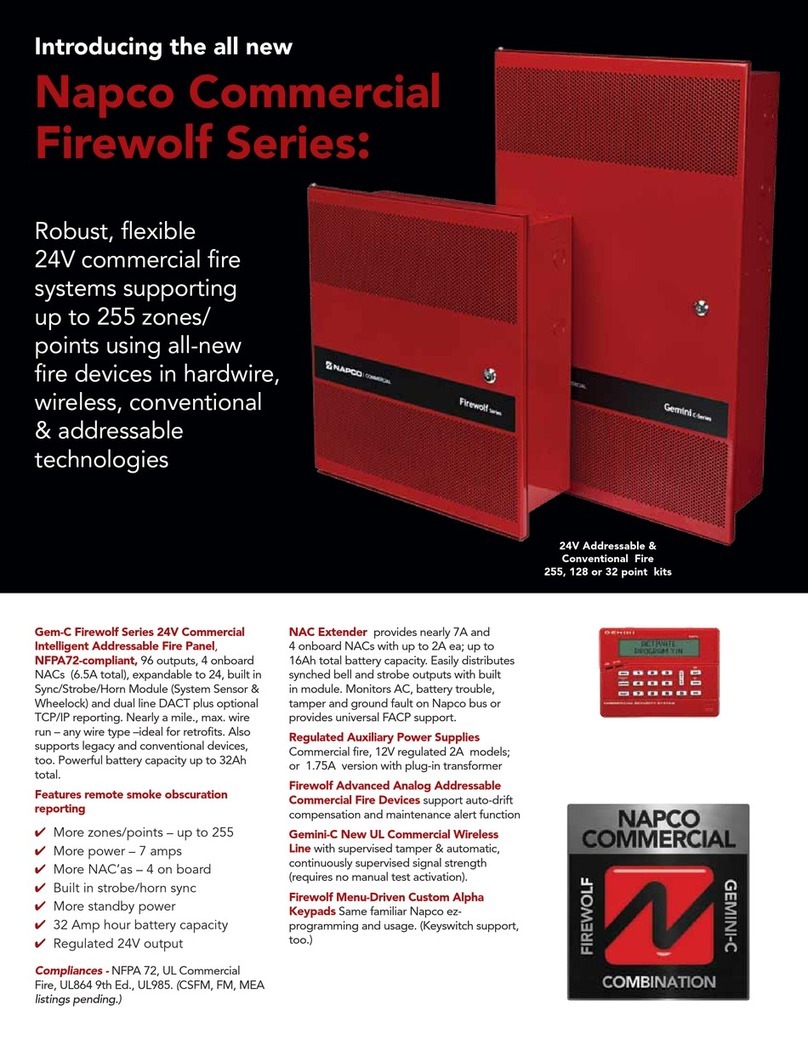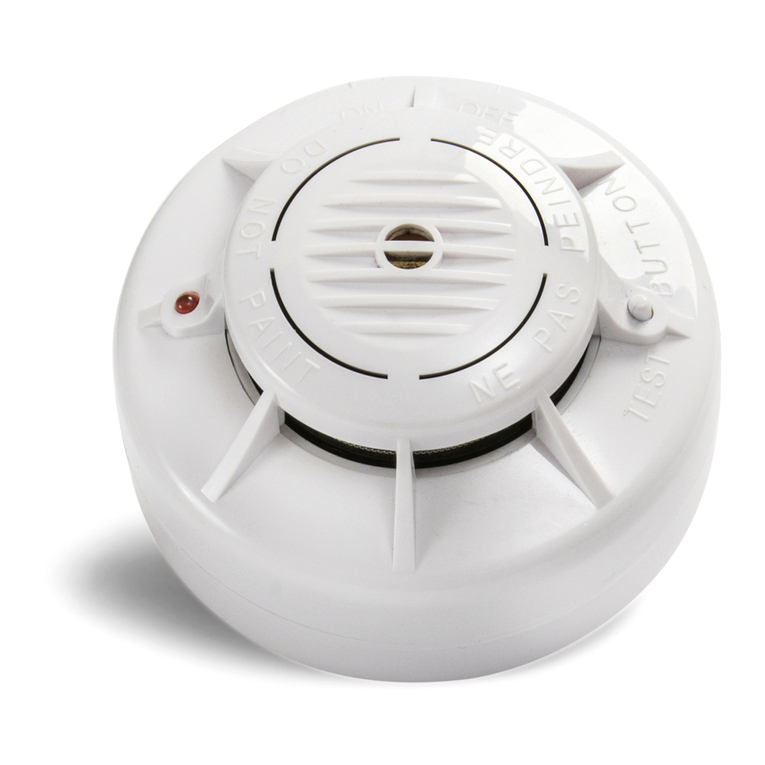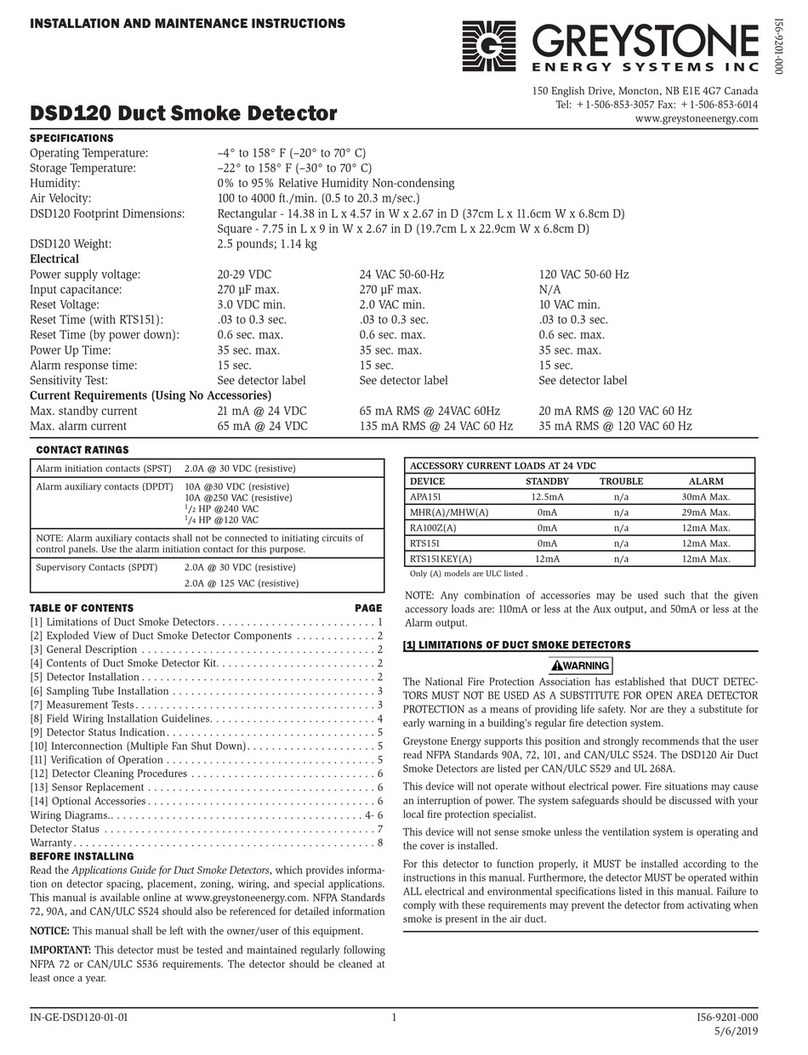
NAPCO LIMITED WARRANTYNAPCO LIMITED WARRANTY
NAPCO SECURITY SYSTEMS, INC. (NAPCO) warrants
its products to be free from manufacturing defects in
materials andworkmanship for thirty-six monthsthirty-six months following
the date of manufacture. NAPCO will, within said period,
at its option, repair or replace any product failing to
operatecorrectlywithoutchargetothe original purchaser
or user.
This warranty shall not apply to any equipment, or any
part thereof, which has been repaired by others, improp-
erlyinstalled,improperlyused,abused,altered,damaged,
subjected to acts of God, or on which any serial numbers
have been altered, defaced or removed. Seller will not be
responsible for any dismantling or reinstallation charges.
THEREARENOWARRANTIES,EXPRESSORIMPLIED,
WHICH EXTEND BEYOND THE DESCRIPTION ON THE
FACE HEREOF. THERE IS NO EXPRESS OR IMPLIED
WARRANTY OF MERCHANTABILITY OR A WARRANTY
OFFITNESSFORAPARTICULARPURPOSE.ADDITION-
ALLY, THIS WARRANTY IS IN LIEU OF ALL OTHER OB-
LIGATIONS OR LIABILITIES ON THE PART OF NAPCO.
Any action for breach of warranty, including but not
limited to any implied warranty of merchantability, must
be brought within the six months following the end of the
warranty period. IN NO CASE SHALL NAPCO BE LIABLE
TO ANYONE FOR ANY CONSEQUENTIAL OR INCIDEN-
TAL DAMAGES FOR BREACH OF THIS OR ANY OTHER
WARRANTY,EXPRESSORIMPLIED,EVENIF THE LOSS
OR DAMAGE IS CAUSED BY THE SELLER’S OWN NEG-
LIGENCE OR FAULT.
In case of defect, contact the security professional who
installed and maintains your security system. In order to
exercise the warranty, the product must be returned by
the security professional, shipping costs prepaid and in-
sured to NAPCO. After repair or replacement, NAPCO
assumes the cost of returning products under warranty.
NAPCO shall have no obligation under this warranty, or
otherwise, if the product has been repaired by others,
improperly installed, improperly used, abused, altered,
damaged, subjected to accident, nuisance, flood, fire or
acts of God, or on which any serial numbers have been
altered, defaced or removed. NAPCO will not be respon-
sible for any dismantling, reassembly or reinstallation
charges.
This warranty contains the entire warranty. It is theThis warranty contains the entire warranty. It is the
sole warranty and any prior agreements or represole warranty and any prior agreements or repre--
sentations, whether oral or written, are either mergedsentations, whether oral or written, are either merged
herein or are expressly cancelled. NAPCO neither asherein or are expressly cancelled. NAPCO neither as--
sumes, nor authorizes any other person purporting tosumes, nor authorizes any other person purporting to
actonitsbehalfto modify, to change, or toassumeforactonits behalf to modify, to change, ortoassumefor
it, any other warranty or liability concerning its prodit, any other warranty or liability concerning its prod--
ucts.ucts.
In no event shall NAPCO be liable for an amount in
excess of NAPCO’s original selling price of the product,
for any loss or damage, whether direct, indirect, inciden-
tal, consequential, or otherwise arising out of any failure
oftheproduct.Seller’swarranty, as hereinabovesetforth,
shall not be enlarged, diminished or affected by and no
obligation or liability shall arise or grow out of Seller’s
renderingoftechnicaladviceorserviceinconnectionwith
Buyer’s order of the goods furnished hereunder.
NAPCO RECOMMENDS THAT THE ENTIRE SYSTEM
BE COMPLETELY TESTED WEEKLY.
Warning:Warning: Despite frequent testing, and due to, but not
limited to, any or all of the following; criminal tampering,
electrical or communications disruption, it is possible for
the system to fail to perform as expected. NAPCO does
not represent that the product/system may not be com-
promised or circumvented; or that the product or system
will prevent any personal injury or property loss by bur-
glary, robbery, fire or otherwise; nor that the product or
system will in all cases provide adequate warning or
protection.Aproperlyinstalledandmaintainedalarmmay
only reduce risk of burglary, robbery, fire or otherwise but
itisnot insurance or a guaranteethat these events will not
occur. CONSEQUENTLY, SELLER SHALL HAVE NO LI-
ABILITY FOR ANY PERSONAL INJURY, PROPERTY
DAMAGE, OR OTHER LOSS BASED ON A CLAIM THE
PRODUCT FAILED TO GIVE WARNING. Therefore, the
installer should in turn advise the consumer to take any
and all precautions for his or her safety including, but not
limited to, fleeing the premises and calling police or fire
department, in order to mitigate the possibilities of harm
and/or damage.
NAPCO is not an insurer of either the property or safety
of the user’s family or employees, and limits its liability for
any loss or damage including incidental or consequential
damages to NAPCO’s original selling price of the product
regardless of the cause of such loss or damage.
Some states do not allow limitations on how long an
implied warranty lasts or do not allow the exclusion or
limitation of incidental or consequential damages, or dif-
ferentiate in their treatment of limitations of liability for
ordinary or gross negligence, so the above limitations or
exclusions may not apply to you. This Warranty gives you
specific legal rights and you may also have other rights
which vary from state to state.




